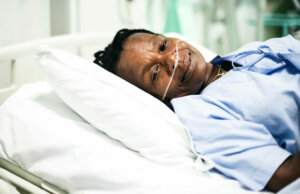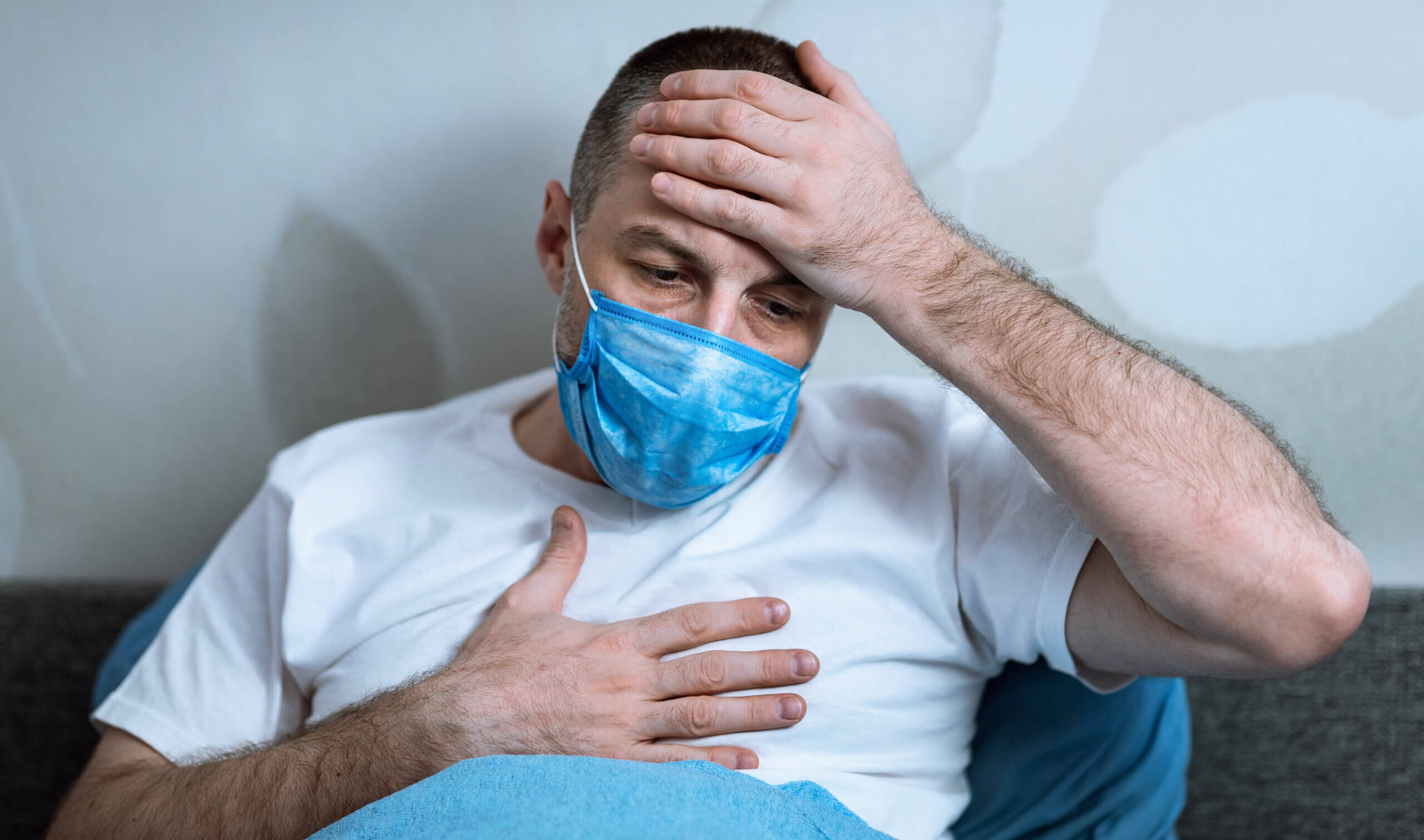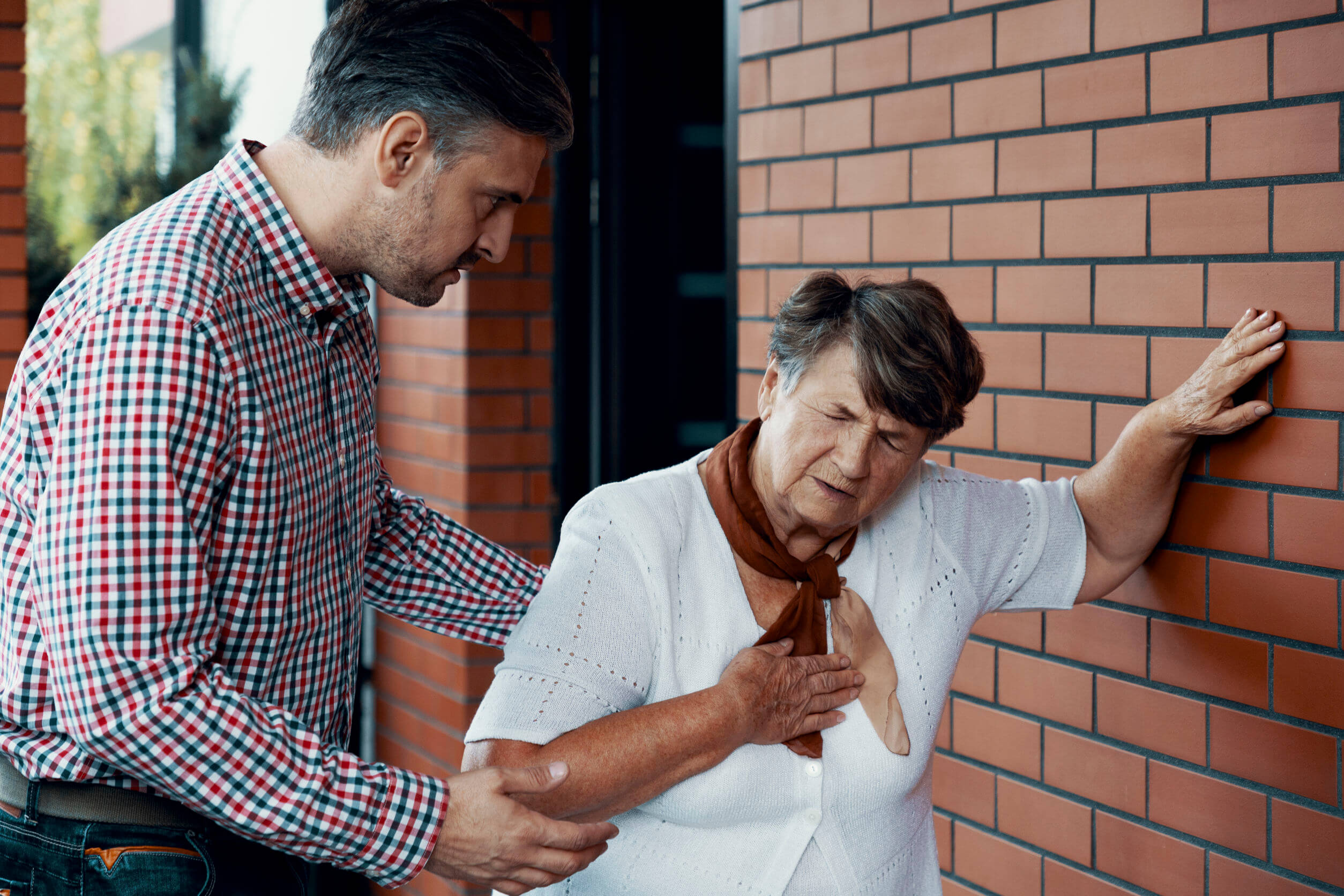What Is Oxygen Saturation and How to Measure It?

The oxygen saturation in the blood influences a large number of functions in the human body. Several diseases can affect it, and there are some methods (both invasive and non-invasive) to measure it.
Here’s a short article on this interesting aspect of health. Continue reading for more information!
Some aspects of human physiology

Oxygen is very abundant in the environment of planet earth. Although this measure can vary depending on several factors, it’s estimated that oxygen makes up about 21% of the elements in the air, and is very important for living beings.
This is used, from a molecular point of view, to generate energy in a much more efficient way. In humans, this process is called aerobic respiration. As a result, carbon dioxide (CO2) is produced, a “waste” substance, as it doesn’t fulfill other functions in humans (but it does in nature).
As the oxygen concentration in the environment decreases (as occurs at high altitudes), the organs begin to fail due to a lack of energy. There are some compensation mechanisms in these situations, but they usually occur after several months of exposure.
The entry of oxygen, as well as the exit of carbon dioxide, occurs through the respiratory system. The lungs are the main organs of the system, and, from a microscopic point of view, they have structures called alveoli, which are shaped like a sack with very thin walls.
These walls are in close contact with blood vessels called capillaries (which carry carbon dioxide from the tissues). During ventilation, inspired oxygen passes to the capillaries to go to the rest of the body, while CO2 passes to the alveoli, to be expelled through exhalation.
This last process is known as gas exchange, and numerous factors can alter its operation.
What does oxygen saturation express?
The term saturation only refers to the amount of a certain gas in a liquid medium, expressed as a percentage (%). In this case, it’s the amount of oxygen in the blood.
This element is found attached to hemoglobin, a molecule within red blood cells or erythrocytes. Its pathological decrease causes anemia, with sickle cell disease being one of the most serious.
In healthy people, the normal range is between 95 and 99%. At these levels, all organs and tissues have an adequate supply of oxygen in order to function properly. Of course, the latter depends on other factors such as the presence of macronutrients in the body, as well as the correct functioning of the cardiovascular system.
From a clinical point of view, doctors often determine this parameter to detect failures in the pulmonary system. As you’ll see later, there are several methods that can measure it. Fortunately, the use of oximeters is a non-invasive, inexpensive, and quick-access way to make decisions when a patient’s life is at stake.
There are several names to express oxygen saturation, depending on the vascular structure involved. Some of them are the following:
- S02: This is the general measurement.
- Sa02: This refers to arterial saturation.
- Sv02: Venous saturation.
- PaO2: This means partial pressure of oxygen, and can only be measured with an arterial blood gas.
How to measure oxygen saturation?
There are several methods to perform this measurement. The main one, due to its easy access and use, is with the saturometer or pulse oximeter. Although for years it was used as an instrument for the exclusive use of health personnel and patients with serious lung diseases, as a result of the COVID-19 pandemic it became part of many households.
It’s a non-invasive and inexpensive method for estimating oxygen saturation. In most cases, it’s a small device (about 6×5 cm) capable of being opened and inserted into one of the patient’s fingers.
This emits lights that “go through” the patient’s finger and are captured by a detector at the other end of the device, allowing the hemoglobin saturation to be determined.
In addition, it’s a painless technique that can be carried out at any time. It has the disadvantage of not being completely accurate, and so there’s no exact value that can be defined as serious. In general, when there’s a saturation below 90%, it’s necessary to request a medical evaluation to determine the reasons.
Arterial blood gas is an invasive method used in healthcare centers, and provides much more accurate information than pulse oximetry.
As we said in the previous section, it allows the partial pressure of oxygen (PaO2) to be measured, but it requires taking a small blood sample, usually from the radial artery. The downside is that it’s usually somewhat painful.
This sample is introduced into equipment that, almost automatically, is capable of revealing important data on oxygenation and blood pH. This allows detection of metabolic or respiratory abnormalities, and is widely used in intensive care units. Unless it’s an urgent situation, it isn’t carried out routinely.
Conditions that can alter oxygen saturation

There are several pathologies that can alter these values, most of them of pulmonary origin. Chronic diseases can cause progressive damage, so that the patient’s body is able to adapt to low oxygen levels without significant symptoms.
This is the case in smokers who develop chronic obstructive pulmonary disease (COPD). Many tend to handle low oxygen values due to lung damage, and can sometimes tolerate it better than patients who suffer from a rapid decrease in arterial oxygen from any acute condition. There are other causes of COPD too.
Other conditions include pneumonia, pulmonary fibrosis, or tumors of the respiratory system. Any of them can alter the balance between the anatomy of the lung and the blood vessels that come into contact with the alveoli.
For example, some types of lung cancer can cause lung collapse, with the consequent failure of oxygenation.
It’s a case that’s similar to pulmonary fibrosis. Here, for many different reasons, the amount of scar tissue can increase, which hinders adequate gas exchange. This can result from occupational exposure to certain substances (such as heavy metals and asbestos), radiation, chemotherapy, and systemic inflammatory diseases.
Sometimes, some defects in hemoglobin can lead to an inability to deliver oxygen to the tissues. This is the case in methemoglobinemia, in which, although the respiratory system is intact, oxygenation of the tissues is difficult, leading to progressive damage to the organs.
Oxygen saturation and COVID-19
COVID-19 can create a medical situation in which there’s a rapid deterioration in lung function. Despite the fact that many of the causes of mortality have to do with clotting phenomena (which, in healthy people, there are warning signs that should be known), the decrease in oxygen saturation is responsible for many of the symptoms of the disease.
This can cause any of the following symptoms:
- Weakness or fatigue
- Pale skin
- Cold or blue extremities
- Increased respiratory and heart rate
Many of these patients usually have a pulse oximeter on hand, with the aim of going to the doctor early, in case of detecting alterations.
Knowing the oxygen saturation is important from a practical point of view
Oxygen saturation measurement is a basic tool in medicine. In life-threatening situations, it can be very useful for making therapeutic decisions, and thanks to pulse oximetry, many patients can closely monitor their underlying disease.
The oxygen saturation in the blood influences a large number of functions in the human body. Several diseases can affect it, and there are some methods (both invasive and non-invasive) to measure it.
Here’s a short article on this interesting aspect of health. Continue reading for more information!
Some aspects of human physiology

Oxygen is very abundant in the environment of planet earth. Although this measure can vary depending on several factors, it’s estimated that oxygen makes up about 21% of the elements in the air, and is very important for living beings.
This is used, from a molecular point of view, to generate energy in a much more efficient way. In humans, this process is called aerobic respiration. As a result, carbon dioxide (CO2) is produced, a “waste” substance, as it doesn’t fulfill other functions in humans (but it does in nature).
As the oxygen concentration in the environment decreases (as occurs at high altitudes), the organs begin to fail due to a lack of energy. There are some compensation mechanisms in these situations, but they usually occur after several months of exposure.
The entry of oxygen, as well as the exit of carbon dioxide, occurs through the respiratory system. The lungs are the main organs of the system, and, from a microscopic point of view, they have structures called alveoli, which are shaped like a sack with very thin walls.
These walls are in close contact with blood vessels called capillaries (which carry carbon dioxide from the tissues). During ventilation, inspired oxygen passes to the capillaries to go to the rest of the body, while CO2 passes to the alveoli, to be expelled through exhalation.
This last process is known as gas exchange, and numerous factors can alter its operation.
What does oxygen saturation express?
The term saturation only refers to the amount of a certain gas in a liquid medium, expressed as a percentage (%). In this case, it’s the amount of oxygen in the blood.
This element is found attached to hemoglobin, a molecule within red blood cells or erythrocytes. Its pathological decrease causes anemia, with sickle cell disease being one of the most serious.
In healthy people, the normal range is between 95 and 99%. At these levels, all organs and tissues have an adequate supply of oxygen in order to function properly. Of course, the latter depends on other factors such as the presence of macronutrients in the body, as well as the correct functioning of the cardiovascular system.
From a clinical point of view, doctors often determine this parameter to detect failures in the pulmonary system. As you’ll see later, there are several methods that can measure it. Fortunately, the use of oximeters is a non-invasive, inexpensive, and quick-access way to make decisions when a patient’s life is at stake.
There are several names to express oxygen saturation, depending on the vascular structure involved. Some of them are the following:
- S02: This is the general measurement.
- Sa02: This refers to arterial saturation.
- Sv02: Venous saturation.
- PaO2: This means partial pressure of oxygen, and can only be measured with an arterial blood gas.
How to measure oxygen saturation?
There are several methods to perform this measurement. The main one, due to its easy access and use, is with the saturometer or pulse oximeter. Although for years it was used as an instrument for the exclusive use of health personnel and patients with serious lung diseases, as a result of the COVID-19 pandemic it became part of many households.
It’s a non-invasive and inexpensive method for estimating oxygen saturation. In most cases, it’s a small device (about 6×5 cm) capable of being opened and inserted into one of the patient’s fingers.
This emits lights that “go through” the patient’s finger and are captured by a detector at the other end of the device, allowing the hemoglobin saturation to be determined.
In addition, it’s a painless technique that can be carried out at any time. It has the disadvantage of not being completely accurate, and so there’s no exact value that can be defined as serious. In general, when there’s a saturation below 90%, it’s necessary to request a medical evaluation to determine the reasons.
Arterial blood gas is an invasive method used in healthcare centers, and provides much more accurate information than pulse oximetry.
As we said in the previous section, it allows the partial pressure of oxygen (PaO2) to be measured, but it requires taking a small blood sample, usually from the radial artery. The downside is that it’s usually somewhat painful.
This sample is introduced into equipment that, almost automatically, is capable of revealing important data on oxygenation and blood pH. This allows detection of metabolic or respiratory abnormalities, and is widely used in intensive care units. Unless it’s an urgent situation, it isn’t carried out routinely.
Conditions that can alter oxygen saturation

There are several pathologies that can alter these values, most of them of pulmonary origin. Chronic diseases can cause progressive damage, so that the patient’s body is able to adapt to low oxygen levels without significant symptoms.
This is the case in smokers who develop chronic obstructive pulmonary disease (COPD). Many tend to handle low oxygen values due to lung damage, and can sometimes tolerate it better than patients who suffer from a rapid decrease in arterial oxygen from any acute condition. There are other causes of COPD too.
Other conditions include pneumonia, pulmonary fibrosis, or tumors of the respiratory system. Any of them can alter the balance between the anatomy of the lung and the blood vessels that come into contact with the alveoli.
For example, some types of lung cancer can cause lung collapse, with the consequent failure of oxygenation.
It’s a case that’s similar to pulmonary fibrosis. Here, for many different reasons, the amount of scar tissue can increase, which hinders adequate gas exchange. This can result from occupational exposure to certain substances (such as heavy metals and asbestos), radiation, chemotherapy, and systemic inflammatory diseases.
Sometimes, some defects in hemoglobin can lead to an inability to deliver oxygen to the tissues. This is the case in methemoglobinemia, in which, although the respiratory system is intact, oxygenation of the tissues is difficult, leading to progressive damage to the organs.
Oxygen saturation and COVID-19
COVID-19 can create a medical situation in which there’s a rapid deterioration in lung function. Despite the fact that many of the causes of mortality have to do with clotting phenomena (which, in healthy people, there are warning signs that should be known), the decrease in oxygen saturation is responsible for many of the symptoms of the disease.
This can cause any of the following symptoms:
- Weakness or fatigue
- Pale skin
- Cold or blue extremities
- Increased respiratory and heart rate
Many of these patients usually have a pulse oximeter on hand, with the aim of going to the doctor early, in case of detecting alterations.
Knowing the oxygen saturation is important from a practical point of view
Oxygen saturation measurement is a basic tool in medicine. In life-threatening situations, it can be very useful for making therapeutic decisions, and thanks to pulse oximetry, many patients can closely monitor their underlying disease.
- Barboza M. Enfermedad Pulmonar Obstructiva Crónica. Revista Médica Sinergia 2017;2(6):10-14.
- Guan W, et al. China Medical Treatment Expert Group for COVID-19, Clinical
Characteristics of Coronavirus Disease 2019 in China. N Engl J Med 2020.10.1056. - López-Herranz G. Oximetría de pulso: A la vanguardia en la monitorización no invasiva de la oxigenación. Rev Med Hosp Gen Mex 2003;66(3):160-169.
- Luna M, et al. Fundamentos de la oxigenoterapia en situaciones agudas y crónicas: indicaciones, métodos, controles y seguimiento. An Pediatr (Barc) 2009;71(2):161–174.
- Moral Gil L, Asensio de la Cruz O, Lozano Blasco J. Asma: aspectos clínicos y diagnósticos. Protoc diagn ter pediatr 2019;2:103-15.
- Pavord ID, Beasley R, Agusti A, Anderson GP, Bel E, Brusselle G, et al. After asthma: redefining airways diseases. Lancet 2018;391:350-400.
Este texto se ofrece únicamente con propósitos informativos y no reemplaza la consulta con un profesional. Ante dudas, consulta a tu especialista.







